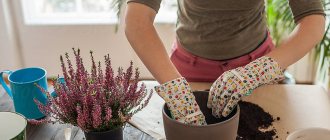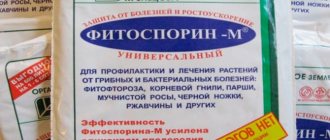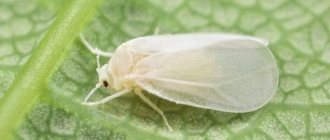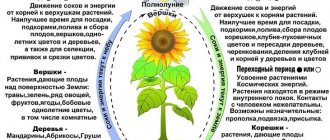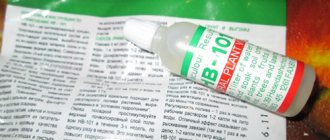Hello, dear readers of my blog. In this article I will tell you an interesting story about the rescue of one of my friend’s violets, which she grew on a wick. Violets are unpretentious flowers, but they get sick very often, especially if they are moistened with a wick. My friend left for a while, came back, and the flowers were dying - the leaves were drooping, rust appeared on the leaves. She told me about this with tears in her eyes. I advised using Fitosporin for violets.
I want to tell you about this miracle remedy, if you don’t know. This is a drug to combat pathogenic bacteria of new generation plants. People often ask: is this drug dangerous, can it be used in an apartment? Its peculiarity is that it does not contain dangerous chemicals, but consists of dormant soil bacteria Bacillus subtilis. Therefore, it is completely safe for both people and animals. This was especially important for my friend because she has allergies, small children, and a dog. Dangerous drugs definitely could not be used in the apartment.
Description of the drug
Active ingredient of the drug: Bacillus subtilis 26 D, 100 million cells/g. Produced in UFA.
The drug belongs to the class of bacterial fungicides and biological pesticides. The impact begins from the moment of application.
According to the hazard class for human exposure, the drug belongs to class 4. In case of close contact with the substance, it may cause irritation of the mucous membrane.
According to the hazard class for impact on bees, the drug belongs to class 3. Safe distance is 4-5 kilometers. Fitosporin does not pose a threat to beneficial insects.
The drug is released in the form:
- Powder in bags of 10 or 30 g. The titer must be at least 2 billion spores and living cells and spores/g;
- Pastes in the form of a flat cake in a bag weighing 200 grams. The titer must be at least 100 million living cells and spores/g;
- Liquid suspension. The titer must be at least 1 billion living cells and spores/ml.
Insect pests of violets
In addition to diseases, violets suffer from a number of pests.
Mealybugs
Mealybugs are round insects with a white or waxy coating that reproduce very quickly in favorable conditions. They feed on plant sap, completely weakening the flowers.
Signs of damage include the appearance of a mushroom smell from the soil, a change in green color to yellow or gray, a decrease in the elasticity of the leaves, stunted growth and the appearance of rotting of roots and leaves.
Control measures: treating flowers with insecticides.
Ticks
Violets infect two types of mites: cyclamen and spider mites. The former damage young leaves and stems, leaving yellow marks. The latter make red punctures on the leaves, on which a web is formed. Ticks are carriers of many diseases, so it is necessary to take measures to destroy them. Insecticides are used to control pests.
Aphid
A small transparent greenish insect brings a lot of trouble to Saintpaulias. It affects all succulent parts, sucking juice from leaves, petioles, and buds. Toxic elements are carried by juices throughout the plant, slowing down development and deforming it.
To combat aphids, flowers are treated in the shower, washed with soapy water, and in difficult cases, sprayed with insecticides.
Nematodes
Signs of violet infection by nematodes are dark green spots that gradually darken and rot. The growing point dries out, from which deformed leaves develop. The condition of the flowers is weakened, drooping, flower stalks with buds do not appear, the stems are bent, and ultimately the plant dies. The pest can only be identified by looking at the soil. To do this, remove the violet from the pot and examine the condition of the roots.
The nematode is a tiny insect that is very difficult to remove.
Control measures:
- complete replacement of soil with disinfected one;
- treating violets with insecticides if the infection has just begun. Otherwise, the plant is destroyed.
Garden violets (pansies) also suffer from putrefactive diseases. She suffers from powdery mildew, rust and viruses less often. Of the pests, in addition to those listed, it is attacked by slugs.
Use of phytosporin
The drug refers to drugs that can independently spread throughout the plant’s vascular system. The basis of Fitosporin-M is a spore culture, which, thanks to its waste products, can suppress the development of fungal and bacterial diseases:
- Alternaria;
- Bacteriosis;
- Root rot;
- Powdery mildew;
- Brown rust;
- Fomosa;
- Rust;
- Snow mold;
- Bacterial spotting;
- Septoria;
- Monolial burn;
- Downy mildew;
- Rhizoctoniosis;
- Fusarium rot;
- Cercospora.
The drug also protects against the formation of rot during storage:
- Gray rot;
- Black dry rot;
- White rot;
- Fruit rot.
It is important to understand that such a drug cannot cure or prevent absolutely all diseases. Its effectiveness may vary from plant to plant. It depends on the type of disease, the effect of the drug can be from 65 to 95%. Such indicators are considered good, given the fact that the drug is low-toxic and can be used at home.
One of the advantages of the drug is that live cultures can be stored at temperatures ranging from -50 to +40°C. Even in freezing conditions, the drug retains its properties. If unfavorable conditions are created for the Bacillus subtilis culture, it goes into a spore state and vital activity ceases for a while. However, as soon as conditions are restored, the bacteria become active again and inhibit bacteria and pathogenic fungi. In addition, the biofungicide Fitosporin-M may contain the bioactive fertilizer GUMI. As a rule, the manufacturer writes about this on the packaging. Humic acids are used to treat the root system. You should not treat vegetables and fruits with them, even before storing.
Important !!! The main advantage of the drug is the ability to use it at any period of plant development. It can be used both during the growing season and during the period of flowering and ripening of fruits.
The manufacturer claims that the crop is safe even on the day of treatment with phytosporin.
However, it is worth highlighting the disadvantage. When exposed to direct sunlight, Bacillus subtilis bacteria die, so spraying of plants should be done in cloudy weather or when the sun is not active. In addition, we must not forget to rinse fruits and vegetables with hot water before consuming them. Simply wash the berries under cold running water.
The drug can also be used to treat seeds and seedlings before planting. Experienced gardeners often treat open ground with phytosporin. Any weather conditions are suitable for this procedure. But there is one caveat: if it rains after spraying, then re-treatment will be necessary, as the protective film will be washed off. The frequency of spraying should be 1-2 weeks. If the rains are too frequent, then you need to spray a couple of hours before the rain or immediately after the rain.
If Fitosporin is used for irrigation, then the frequency of the procedure for vegetable crops is 1 time per month, and for fruits and berries - 2 times. If we are talking about indoor plants - once a month.
To combat scab, you can also treat trees with phytosporin. To do this, you need to dissolve 5 grams of powder in 10 liters of water. Spray the tree crown using a stepladder or ladder. It is recommended to combine spraying with phytosporin with a growth stimulator. For example, zircon (1 ml of substance per 10 liters of water). The first spraying should be done when the leaves are at the unfolding stage, and the second - when the ovary process has just begun. Watering the trees is not necessary, since a large amount of solution will not be absorbed by the roots.
Phytosporin powder
You need to prepare the solution 1-2 hours before spraying:
- Soaking bulbs and tubers. You will need: 10 grams of powder, 500 ml of water. Treat preplanting material with this solution;
- To soak the seeds before sowing. You will need: 0.5 teaspoon of powder and 100 ml of water;
- To prevent rot in the root system of seedlings. You will need: 10 grams of the drug and 5 liters of water. You need to leave the roots in this solution for a couple of hours. After and before planting, you can water the soil with the solution;
For preventive purposes of bacterial and fungal diseases:
- For potato prevention: 10 grams of powder per 5 liters of water. Repeated spraying after two weeks;
- To prevent cabbage: 6 grams of powder per 10 liters of water. Repeated spraying after 2-3 weeks;
- For the prevention of tomatoes, eggplants and peppers: 5 grams of powder per 10 liters of water. Repeated spraying after 10-14 days;
- For the prevention of cucumbers: 10 grams of powder per 5 liters of water. Treat three times at intervals of 10-15 days. For treating garden flowers and indoor plants: 0.5 teaspoon per 2 liters of water - for preventive purposes. For treatment purposes - 0.5 teaspoon of powder per 1 liter of water;
- For treating the soil before planting berries and vegetables: 5 grams of powder per 10 liters of water. Treat the soil a week before planting.
Fitosporin paste
Fitosporin-M paste, which contains GUMI and does not require additives. How to prepare the solution: add 100 grams of paste to 200 ml of water. The solution can be stored for a long time. Before spraying, the mixture must be diluted with water:
- Before planting or storing tubers and bulbs, you need to dilute the solution: 3 tbsp per glass of water. spoons of concentrated mixture;
- To soak vegetable and garden flower seeds, add 2 drops of solution to 0.5 cups of water. Keep the seeds in the solution for 2 hours;
- To strengthen the cuttings you need to take 4 drops of concentrate per 200 ml of water;
- Foliar spraying of berries, vegetables, fruits and flowers for preventive purposes - 3 teaspoons of watering mixture per 10 liters of water. And for spraying - 4 drops of the mixture per 200 ml of water;
- Spraying indoor plants. For 10 liters of water you need to take 10 drops for spraying. And for irrigation, 15 drops per 1 liter of water.
Fitosporin liquid
Liquid phytosporin in finished form is used to treat vegetative crops:
- Indoor;
- Fruit;
- Vegetables;
- Berry.
And also for spraying tubers before storage.
The manufacturer offers to use the solution in various variations. The bottle may contain the following inscriptions:
- "Fitosporin - M Bioprotection for flowers and indoor plants";
- "Fitosporin - M Golden Autumn";
- "Fitosporin - M Storage."
All solutions have an identical composition of useful substances.
Fitosporin-M Reanimator
Bacillus subtilis concentrate contains many amino acids and other useful microelements. All useful substances help dissolve the cell walls of fungi and bacteria. In addition, the drug helps restore plant growth after:
- Overmoistening;
- Sunburn;
- Disease damage;
- Freezing.
The solution can be used with other stimulants for the growth of seedlings.
Watch the video! How to save sick plants Fitosporin M Reanimator
How does he work
Fitosporin is a systemic drug. This means that it penetrates the vascular system and works not on the surface, but from the inside. There are many negative reviews that the drug does not cure. I'm sure this is due to either application errors or insufficient processing.
Bacteria are a real factory of enzymes that will provide unacceptable conditions for fungi, putrefactive bacteria, powdery mildew and rust.
Important! Bacillus subtilis cannot tolerate ultraviolet radiation, so all work with Fitosporin should be carried out early in the morning or in the evening after sunset.
Once added to a pot of violets, bacteria will protect the plants for years. When the temperature drops or there is insufficient watering, they hibernate, but as soon as conditions return to normal, they will “wake up” and begin to act. Well, for company they will need to periodically add “friends”.
The use of phytosporin during fruit ripening
Any plant can be treated with phytosporin, both during flowering and fruiting. For example:
- Cucumbers;
- Grape;
- Tomatoes;
- Strawberries;
- Raspberry.
After processing the plants, the berries can be eaten immediately.
It has been proven that Bacillus subtilis bacteria are not dangerous to animals and humans. Confirmation of this is the assignment of GRAS (safe organisms) status to the drug. In addition, some strains of Bacillus subtilis are included in medicinal products. One of which is Biosporin. The drug is widely used to treat intestinal infections. Thus, phytosporin can rightfully be considered a safe drug.
Consumption rates and composition
The drug is non-toxic and can be safely used in a small room. The product consists of:
- dispute;
- living fractions of Bacillus subtilis culture cells 26 D.
"Fitosporin" begins to act immediately after application. The working solution can be sprayed from a spray bottle or poured over the plant, it all depends on the purpose of use and the type of disease. The product is widely used for the treatment of diseases and for their prevention in vegetables, fruits, flowers,
"Fitosporin" powder
Fitosporin for tomatoes and cucumbers
The drug is used to treat tomatoes and cucumbers. It is important to understand that such crops require intensive care, as they are susceptible to many diseases, so it would be a shame to lose the harvest.
It is unacceptable to treat cucumbers and tomatoes with the drug at the time of flowering, since pesticides tend to accumulate in the fruits. But there is a way out - at the time of flowering, apply foliar fertilizers, for example, boric acid.
Important! Don't forget about late blight prevention.
Protection of seedlings from late blight and other diseases is carried out at different periods:
- When soaking seeds;
- When planting seedlings.
It is worth remembering that in a greenhouse or greenhouse the microclimate is favorable for the development of infections. It is enough to treat with fungicides 1-2 times per season.
As for phytosporin-M, the soil can be treated with it many times, since it is an indispensable tool for organic farming. Despite the fact that the drug has a weak antifungal effect.
Tomatoes and cucumbers should be sprayed with a solution at the rate of 5 grams of phytosporin-M per 10 liters of water. After 5-7 days it is necessary to spray again.
Concentration doesn't matter. You can add enough phytosporin to get a rich tea color.
Important! You cannot process tomatoes and cucumbers outdoors in cold weather! Watering frequency is at least once every 5 days.
Reviews
Anastasia, Yaroslavl. “I have repeatedly used the drug Fitosporin-M for violets, protecting my flowers from various diseases. The product is best used for prevention. I did everything according to the instructions, the effect was excellent, there were no illnesses all season. But, nevertheless, when I noticed a fungal disease on violets, I preferred to treat them with chemicals, after all, they are more effective and reliable.”
Julia, Barnaul. “In a flower shop I was advised to buy Fitosporin-M, although it was written for cucumbers. They said it is also suitable for other plants. I diluted the drug according to the instructions and treated all the flowers. But imagine my disappointment when it turned out that practically nothing had changed. I had to buy chemicals, although they are harmful, they are effective.”
Love, Vyborg. “I regularly treat with Fitosporin. I noticed that in some cases the effect is good, but sometimes the drug does not help, all the signs of the disease remain, except that they become less noticeable. From personal experience I can say that Fitosporin is good for preventing diseases, and it’s also good if the flower has been sick recently. There is also simple Fitosporin, and Fitosporin-M - combined. In my opinion, the second one is more effective.”
Yuri, Magnitogorsk. “I like this drug, natural, effective. I use it every year, just do it right.”
Compatibility of Fitosporin
The drug is well compatible with other chemical pesticides:
- With insecticides;
- With fungicides;
- With fertilizers and growth regulators;
- With antibiotic drugs - Fitolavin.
Advice! It is unacceptable to combine with drugs with an alkaline reaction!
In addition, manufacturers produce a special preparation for specific vegetable crops:
- “Fitosporin-M cucumber;
- “Fitosporin-M tomatoes.
Each preparation contains special microelements that are necessary for a specific crop.
Therefore, the preparations cannot be used to treat other vegetable crops. Fitosporin-M is universal and should not be combined with other fertilizers to avoid an excess of minerals.
Security measures
You need to handle plants while wearing gloves. Do not smoke or eat while gardening. If suddenly the solution gets on the skin or mucous membranes, then it is necessary to rinse the affected area with water. If the concentrate enters the digestive system, you should drink 4 glasses of water and induce vomiting. Afterwards take activated carbon.
The drug should be stored away from medications and food. Make sure that the concentrate does not fall into the hands of children. The shelf life of the drug is 4 years. The solution is stored at moderate temperatures.
Common diseases of violets
Improper care of Saintpaulias leads to various problems associated with the appearance of flowers. A decrease in temperature, high air humidity, and waterlogging of the soil contribute to the rapid development of spores of various fungi. Diseases can be infectious or non-infectious.
Root rot
With excessive watering, the Uzambara violet loses its attractive appearance, the leaves droop and become dull. The root system dies. The roots change color to brown and become soft. The plant is exposed to putrefactive fungi.
To cure violet, urgent measures are needed. To do this, it is important to wash the roots from the previous soil and remove damaged ones. Before transplanting, immerse the remaining healthy parts in a solution of the drug Fitosporin. For a new planting, it is better to use a different soil and pot. If you use an old florist, it must be carefully processed: washed and disinfected, calcined or steamed in the oven, treated with a solution of copper sulfate. On a diseased plant, you can select the upper healthy leaves and root them, after pre-treating them with fungicides to prevent the disease.
Stem rot
Saintpaulia may suffer from careless propagation. In this case, the stems may also rot. The causes of the disease are:
- unwashed and unsanitized instruments;
- deep wounds that were not allowed to heal;
- sections not treated with antifungal agents during propagation;
- excessive watering of young plantings, after which the young roots did not absorb moisture;
- a young, fragile plant was attacked by pests.
The proliferation of putrefactive bacteria on weakened flowers progresses noticeably. Such Saintpaulias can rarely be saved.
Brown rot
The brown base of young rosettes, rooted cuttings and planted children, which becomes thinner over time and softens the stems, indicates infection of Saintpaulia with spores that cause brown rot. There are traces of mycelium on the soil under the leaves.
The disease can spread to other plants, so urgent measures should be taken:
- treat leaves, stems and shoots with antifungal fungicides (Skor, Fundazol);
- apply shallow rooting;
- treat the soil with Fitosporin, PhytoDoctor or Trichodermin;
- use soil that is loose in structure and has good water permeability for planting;
- use frequent but small watering of plants.
Gray mold (botrytis)
The disease is accompanied by the appearance of a gray fluffy coating on the surface of the leaves, the stems soften and weaken. Over time, all parts of the plant turn white and rot. The disease develops from spores in the planting soil, as well as when using old, undisinfected soil, where there may be remnants of previous diseased plants.
To preserve Saintpaulia, you should immediately remove parts of the plant that have wilted.
Further treatment:
- soil disinfection using calcination, freezing, and fungicide treatment;
- treatment of Saintpaulia with fungicides to prevent the spread of the disease.
Prevention:
- spray in the warm season;
- maintain optimal air humidity and regular ventilation;
- eliminate temperature changes;
- control watering of plants, avoiding stagnation, do not get water on the leaves when watering;
- do not place flower pots close to each other;
- prevent the formation of vapors on the walls of the container during reproduction.
Leaf rust
A characteristic coating appears on the bottom of the leaves of the Uzambara violet in the form of yellow or brown thickenings and bulges; it rarely appears on the petioles; on the upper side there are light yellow spots. Over time, fungal spores, spread by air, mature on the lower part of the leaf.
At optimal ambient temperature and humidity, spores do not germinate. To eliminate violet rust disease, it is necessary to adjust environmental indicators.
Powdery mildew
Uzambara violets are susceptible to powdery mildew, which comes in two types: false and true. To specify the diagnosis, it is worth paying attention to the nature of the spots. Downy mildew is accompanied by brown stains. A sign of a real one is the whitish shades of the lesion on the stem and leaves of Saintpaulia. Infection could occur when previously used soil was consumed without treatment or with newly acquired plants.
For sick violets, the following measures are recommended:
- adjust environmental humidity;
- increase the room temperature;
- bring the lighting back to normal by creating additional lighting;
- regularly remove dust on leaves and pots;
- carry out additional fertilizing with phosphorus-potassium fertilizers, since excess nitrogen can also lead to plant damage.
Late blight
Drooping of flowers, accompanied by separation of roots, is caused by late blight. The leaves begin to curl. Cool temperatures and high humidity with insufficient lighting contribute to the disease. In order to fight the disease, the violet needs to create the appropriate conditions:
- remove damaged plant parts and roots;
- replant into new disinfected soil with the addition of perlite, which helps maintain soil moisture;
- treat the violet and soil with Fitosporin or similar preparations;
- root unaffected upper leaves to grow a new flower;
- maintain optimal air temperature and humidity for the newly transplanted plant, and increase illumination.
Fusarium
Brown, falling leaves of violets indicate damage to another fungal disease. As a rule, spores enter the plant from the soil through the roots. The toxic substances released spread to all parts: stems, leaves, flowers. They turn brown and rot. Caused by cold temperatures with increased watering. Sharp temperature changes and heavy planting soil contribute to the intensification of the disease.
Treatment is as follows:
- remove all damaged parts;
- treat the remaining parts of the plant and soil with Fitosporin or Fundazol;
- replant into disinfected soil;
- reduce watering the plant;
- increase the room temperature;
- ventilate regularly.
Vascular bacteriosis
Affected plants have wilted, weak leaves. The disease begins from the affected soil. Fungal spores settle on the roots. As they grow, they release toxic substances that penetrate the plant tissue and destroy it completely. Appears at elevated temperature conditions.
The hotter it is on the windowsill, the faster the disease develops. It is almost impossible to save the plant.
The disease is not transmitted to neighboring violets; they can be saved by creating normal living conditions. Another condition for the progression of bacteriosis is increased soil moisture under cool environmental conditions in winter.
Prevention measures:
- adjust temperature and humidity conditions for keeping flowers;
- increase additional ventilation without direct contact with flowers;
- pre-disinfect the soil and free it from the remains of previous plants;
- use soil with good conductivity for planting, additionally loosening it with vermiculite;
- exclude fertilizing during the recovery period;
- additionally treat the plants with drugs that increase immunity.
Leaf spot or bronzing virus
When Uzambara violets are exposed to direct sunlight, the plant suffers from bronzed leaves. Another condition for the occurrence of the disease is the ingress of water drops during irrigation. The disease spreads with poplar fluff through thrips. A diseased plant stops developing. The leaves become covered with a distinctive coating of red or brown spots. The virus cannot be cured.
Control measures:
- replace soil that may contain fungal spores;
- exclude bright sunlight by moving the flowers to a warm place with diffused light;
- reduce quantitative watering;
- When watering, monitor the direction of the water stream.
Unpretentious varieties of violets
In order not to be disappointed in Uzambara violets, it is advisable to choose an unpretentious flower as the first plant .
Today there is a huge selection of varieties, hundreds of them and they differ in growing conditions . Some of them are undemanding to environmental factors, while others need comfort, a special microclimate or additional lighting.
